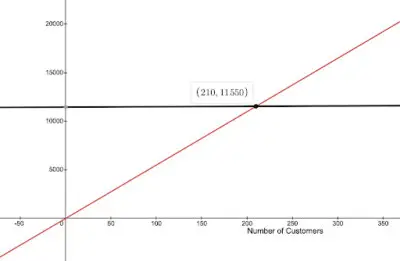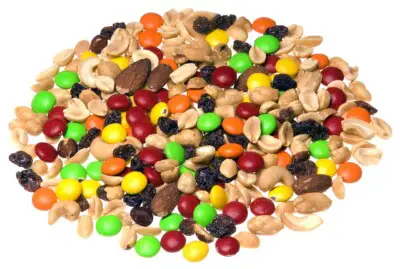Students across the nation have haunted math teachers with the age-old question, “when are we going to use this in real life?” First, it’s worth mentioning that real life includes time in school, so a great answer to that question is, “right now.”
But, it still behooves teachers to have real world applications in mind when teaching new concepts. The dreaded word problems students encounter in their math careers are often where they will see math in action and math in “real life.”
Students typically take two years of algebra. Solve for x. Solve for y. Solve for x and y. It can seem as though students solve endless equations. More challenging, when students learn to solve systems, it seems like double the work! In this article, we’ll explore the uses of linear systems.
Let’s get started.
Cost and Revenue Problems
Systems of linear equations come up a lot in business. In order for a business to remain profitable, the amount of revenue it takes in must be greater than than the costs of running the business.
The point where the cost is equal to the revenue, called the break even point, is often calculated in order to get a sense as to how much business they need to conduct in order to make a profit. To break even, the total revenue must equal the cost of running the business.
Example
The owner of Elegant Nails uses last month’s data to determine the break even point for this month. She discovered that on average, each customer spent $55 on nail services.

She uses the data and determines the monthly cost equation to be C(x) = 0.40x + 11,466 where x represents the number of customers and C(x) is the total monthly cost for running the salon. The revenue equation is R(x) = 55x, where x again represents the number of customers and R(x) is the monthly revenue.
- What does the expression 0.40x represent in the cost equation? What about the number 11,466? What is the meaning of 55x in the revenue equation?
- Find the break even point. That is, find the number of customers per month where Elegant Nails’ revenue will equal their costs.
Solution
Part 1 solution
For the C(x) function, 0.40x is the cost the salon incurs for each customer. It’s not a large cost, just 40 cents per customer and could represent cleaning each station for the customer, disposable flip flops, coffee or tea if it’s served, etc.

The 11,466 is the monthly cost for running the business which includes things like the lease, insurance costs, payroll for the employees, internet, supplies for the salon, utilities, and marketing.
The R(x) function is a lot simpler. The 55x represents the revenue per customer. This comes from the average amount each customer pays for a nail service.
Part 2 solution
Set up a system of equations using the variable y as the cost in the first equation and the revenue in the second equation.
y=0.40x+11,466
y=55x
Use the substitution method to solve the system. In the first equation, plug 55x in for y.
55x=0.40x+11,466
54.60x=11,466
x=210
If the salon has 210 customers per month, it will break even. For 210 customers, the revenue will equal the cost.
Plug x=210 into either the cost or the revenue equation to attain $11,550. See graph below.

Mixture Problems
A common application of systems of equations involves mixture problems. These types of problems are often encountered in chemistry class. Let’s look at an example:
Example
How many liters of 50% saline solution must be mixed with 15% saline solution to obtain 20 liters of 40% saline solution? Round answers to the nearest tenth of a liter.
Solution
For mixture problems, before writing the system of equations, it’s very helpful to fill in a chart with all of our information. In this case, let x be the number of liters of 50% solution and let y be the number of liters of 15% solutions. Set up one row per saline solution, as shown below.

Fill in the first column with the liters of solution. The first two entries in the column are the unknowns x and y, but our final 40% solution should have 20 liters. In the next column, fill in the decimal equivalents of the percentages.
| Liters of Solution | Percent Saline, written as a decimal | TOTALS (liters of saline) | |
| 50% solution | x | 0.50 | |
| 15% solution | y | 0.15 | |
| 40% solution (FINAL) | 20 | 0.40 |
We can find the TOTALS column by multiplying the liters of solution with the percent saline:
| Liters of Solution | Percent Saline, written as a decimal | TOTALS (liters of saline) | |
| 50% solution | x | 0.50 | 0.50x |
| 15% solution | y | 0.15 | 0.15y |
| 40% solution (FINAL) | 20 | 0.40 | 20(0.40) =8 |
Now that we have our chart, it’s simple to write the two equations. We obtain the first equation by adding the expressions in the first column. This equation gives us the total number of liters.
x+y=20
The second equation comes from the sum of the entries in the TOTALS column.
0.50x+0.15y=8
We have our system!
x+y=20
0.50x+0.15y=8
Let’s use the substitution method for solving this system. Using the first equation, solve for y.
x+y=20
y=20 – x
Substitute y=20 – x into the second equation to find x.
0.50x+0.15y=8
0.50x+0.15(20-x)=8
0.50x+3-0.15x=8
0.35x+3=8
0.35x=5
x=14.3
Solve for y:
y=20 – 14.3
y=5.7
We need 14.3 liters of 50% solution and 5.7 liters of 15% solution to obtain 20 liters of 40% solution. It should make sense that we need more of the 50% solution than the 15% solution since 40% is closer to 50% than it is to 15%.
Even if you don’t tend to mix saline solutions in your free time, maybe there are other situations where you need to solve a mixture problem. Sometimes the mixture problems can occur in your own home.
Example
Julia has a large supply of two trail mixes. Trail Mix A contains 10% cashews and Trail Mix B contains 25% cashews.

Julia wants to have 2 cups of trail mix with 15% cashews. How many cups of each trail mix should she mix together?
Try solving this one on your own!
Motion Problems
Linear systems can be used to solve motion problems or distance problems. Have you ever sailed against a strong wind? Or, have you ever noticed that it takes a lot longer to fly east to west rather than west to east? If so, you’ll appreciate the next example.
Example
An airplane flying into a headwind takes 3 hours to fly 1,410 miles west. On the return flight on the same day, the airplane flies with the wind and the flight takes 2.8 hours.

Find the airspeed of the airplane and the speed of the wind, assuming they remain constant for the duration of both flights. (Note: airspeed is the speed of the airplane without any wind.) Round answers to the nearest whole number.
(Speed is just the absolute value of velocity, so it cannot be negative. Learn more about velocity and its uses here).
Solution
To solve this problem, we will make good use of the equation:
| Distance formula d=rt where d represents distance, r represents rate, and t represents time. |
For our problem, the rate of the airplane needs to take into account both the airplane’s speed and the wind speed. Let w represent the wind speed and let x represent the plane’s airspeed, then the rate heading from City A to City B against the headwind is given by x – w. From City B to City A, the plane travels with the wind so the rate is x + w.
We can set up our two linear equations to solve for x and w. The distance d = 1,410 is the same for both trips. The time t for the original flight is 3 hours and 2.8 hours for the return flight. Let’s collect our data in a chart to help find the solution.
| Rate | Time | Distance | |
| City A to City B, against the wind | x – w | 3 | 1,410 |
| City B to City A, with the wind | x + w | 2.8 | 1,410 |
Using the information from each row, and the rt=d formula, we can multiply across each row to write the equations:
City A to City B: (x-w)3=1,410
City B to City A: (x+w)2.8=1,410
Distribute:
3x-3w=1,410
2.8x+2.8w=1,410
Use the elimination method to solve the system.To cancel the w terms, multiply the top equation by 2.8 and the bottom equation by 3.
2.8(3x-3w=1,410)
3(2.8x+2.8w=1,410)
8.4x-8.4w=3,948
8.4x + 8.4w = 4,230
Add the equations to cancel w.
16.8x = 8,178
Divide by 16.8.
x=486.785
Round to the nearest whole number, the air speed of the airplane is 487 miles per hour.
Use one of the equations to solve for w.
3x-3w=1,410
3(487)-3w=1,410
1,461-3w=1,410
-3w=-51
w=17
On that day, the speed of the wind was 17 miles per hour.
Linear Programming
It turns out that you can take an entire course on Linear Programming, a branch of math that uses systems of linear equations and inequalities to help determine the best way to optimize things like profit, revenue, time, etc.
Often, Linear Programming involves systems of inequalities. These typically involve shaded regions to identify the solution set.
Linear programming is a big topic, one to be explored on another day. To learn more about linear programming, geeksforgeeks goes through some examples and solutions. Good stuff!
So now you know! Aside from your time spent in math class, there’s a good chance you may use linear systems at some point in your “real life.”
You can learn more about different types of linear systems below:
I hope you found this article helpful. If so, please share it with someone who can use the information.
Don’t forget to subscribe to our YouTube channel & get updates on new math videos!
About the author:
Jean-Marie Gard is an independent math teacher and tutor based in Massachusetts. You can get in touch with Jean-Marie at https://testpreptoday.com/.



